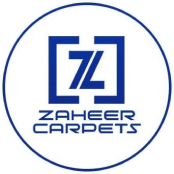Artificial grass, also known as synthetic grass or turf, is a surface material made from synthetic fibers that are designed to look and feel like natural grass. It is commonly used in landscaping, sports fields, and other applications where natural grass is difficult or expensive to maintain.
Made from a blend of polymers, including polyethylene, polypropylene, and nylon, these materials are resistant to UV radiation and water, which makes them ideal for outdoor use. The fibers are typically woven into a backing material made from latex or polyurethane, which provides stability and strength.
Artificial grass has several benefits over natural grass, including:
- Low maintenance: Artificial grass requires no watering, mowing, or fertilizing, which can save a significant amount of time and money.
- Durability: Artificial grass is designed to withstand heavy foot traffic and harsh weather conditions, and can last for years.
- Consistency: Unlike natural grass, which can be affected by factors like weather and soil conditions, artificial grass maintains a consistent appearance and texture.
- Safety: Artificial grass is often used in sports fields and playgrounds, as it provides a safer surface than natural grass, reducing the risk of injury.
- Environmental impact: Artificial grass does not require the use of pesticides, fertilizers, or water, which can have a positive impact on the environment.
A fun fact is that this turf offers a range of colors, textures, and pile heights, allowing it to be customized to fit the needs of any application. It can be used in a variety of settings, from residential lawns to commercial landscaping to sports fields and many more.
Overall, artificial grass is a durable, low-maintenance, and environmentally-friendly option for anyone looking to create a natural-looking outdoor space. With its many benefits and customization options, artificial grass is a great investment for any home or business.

